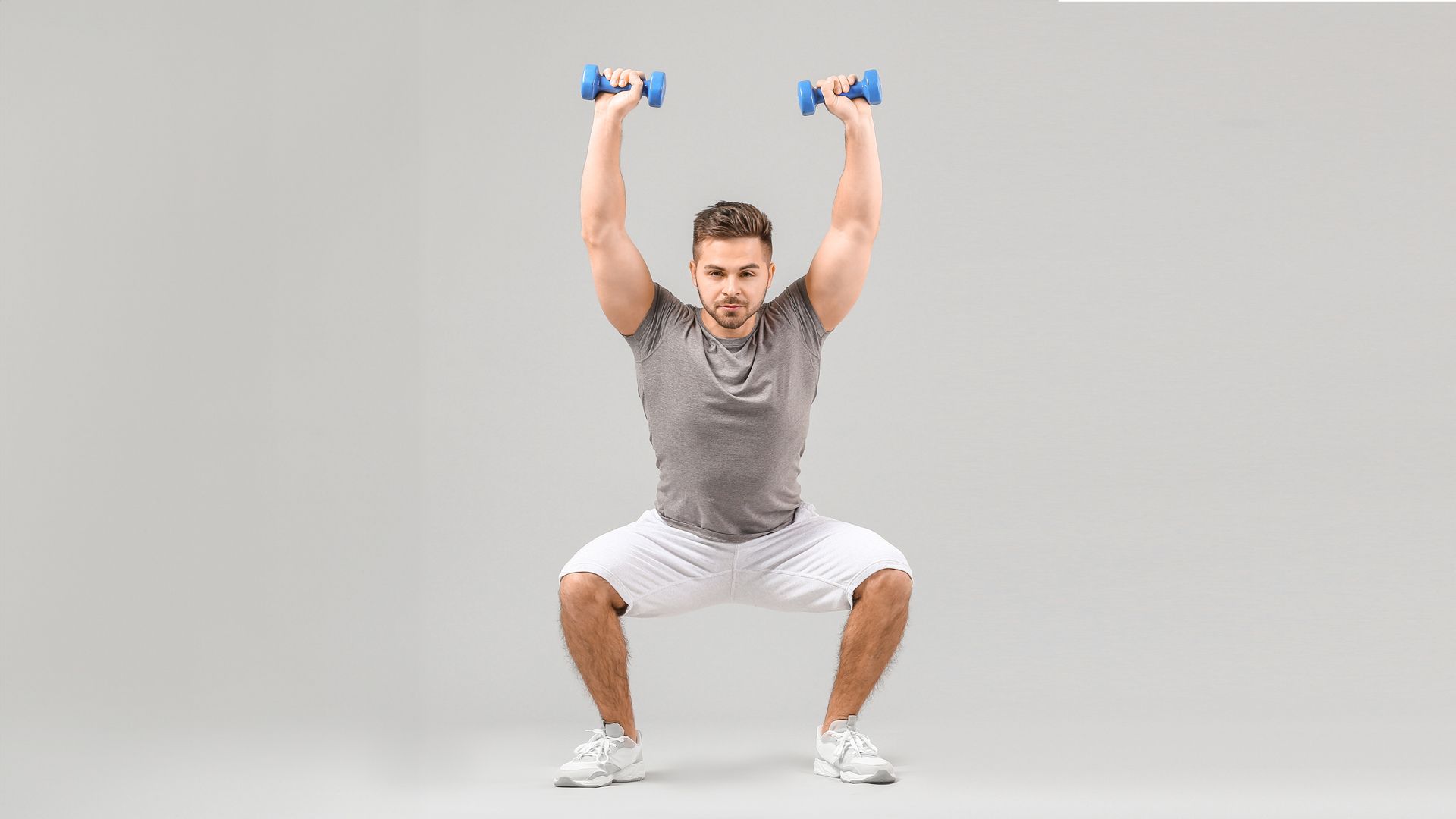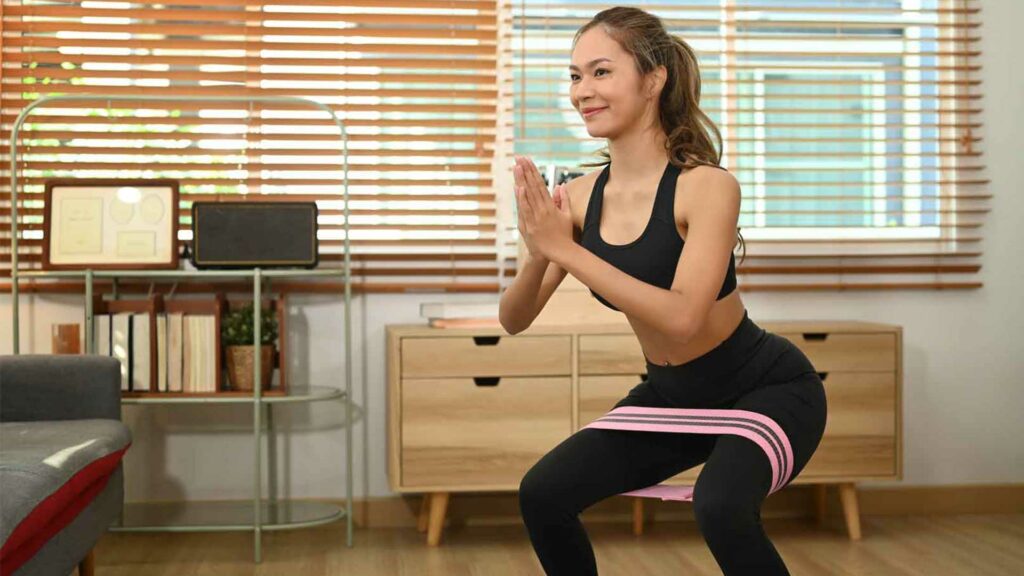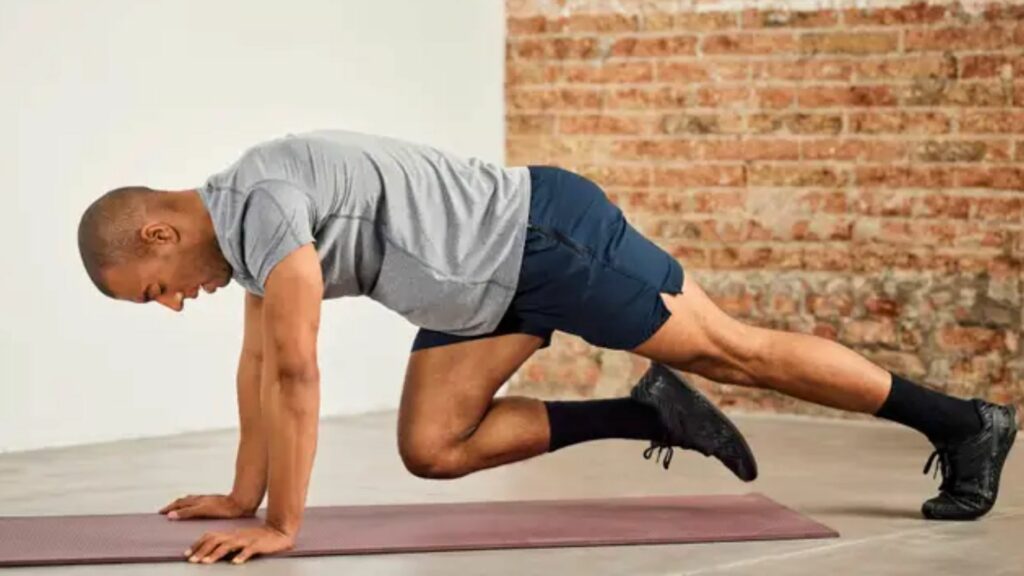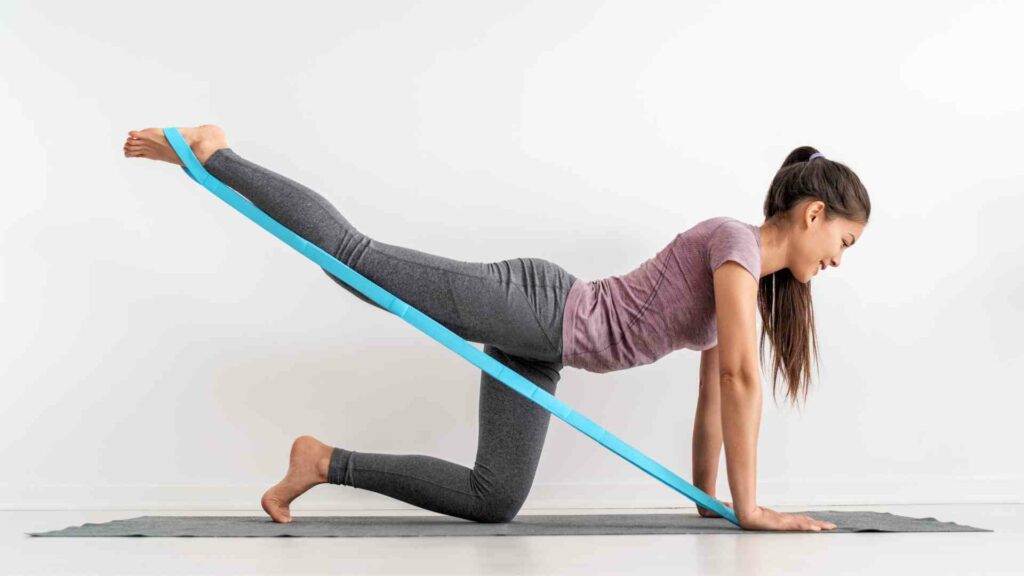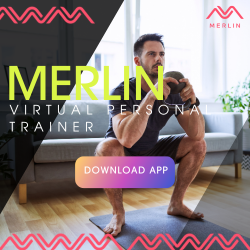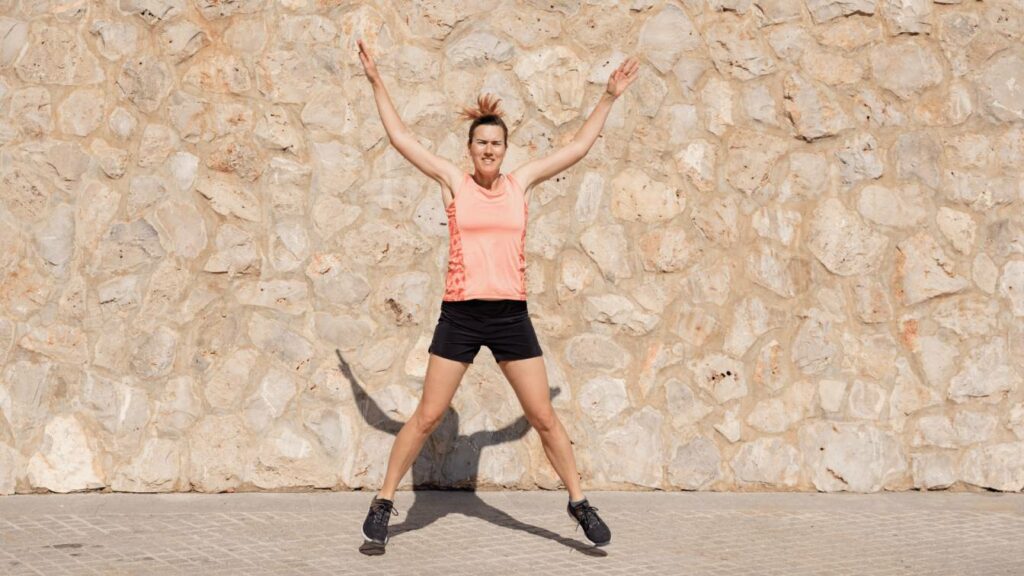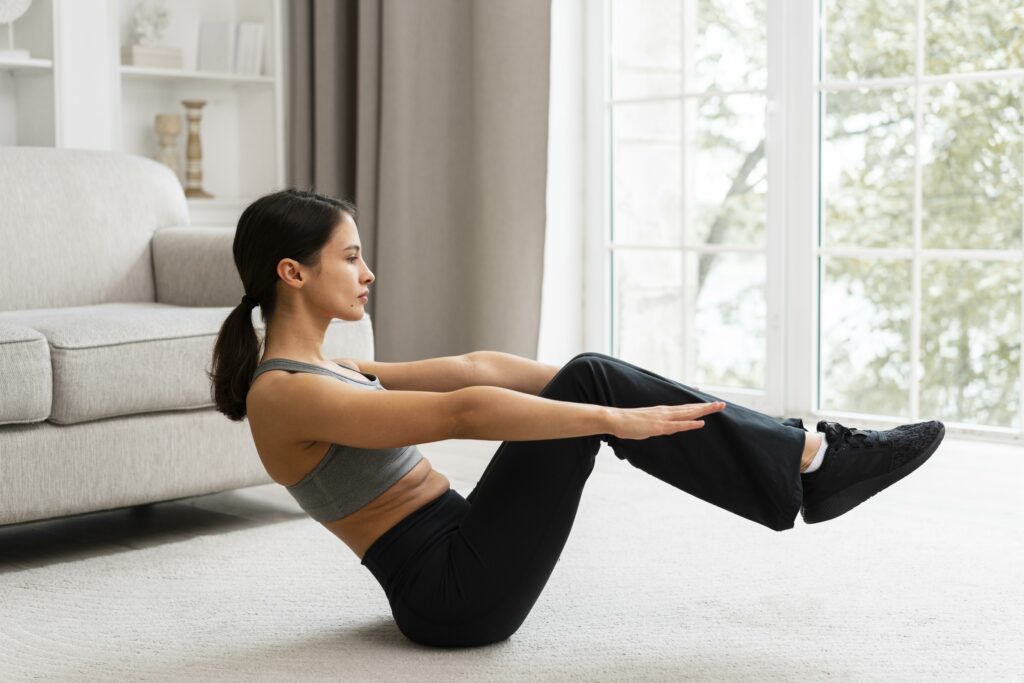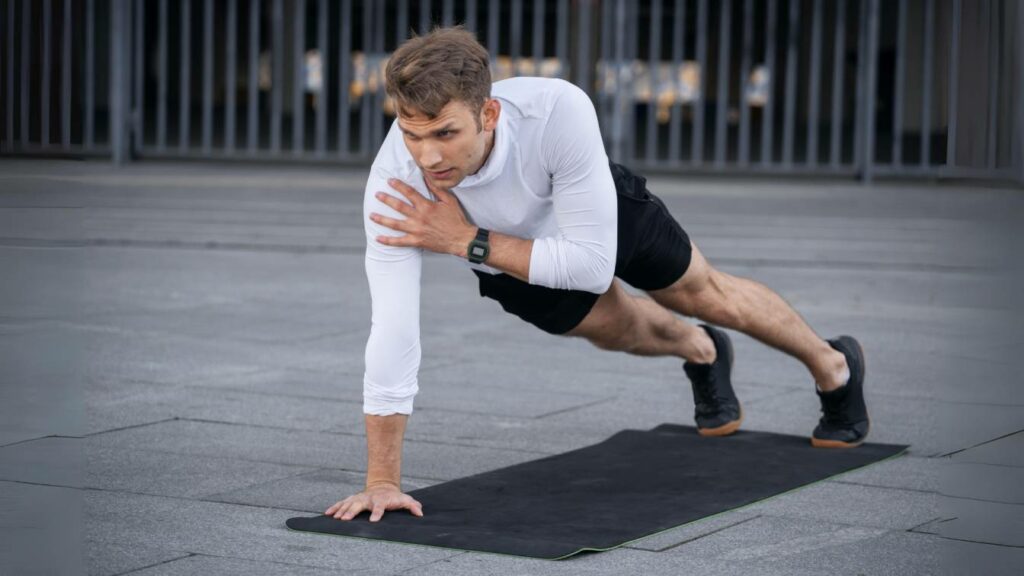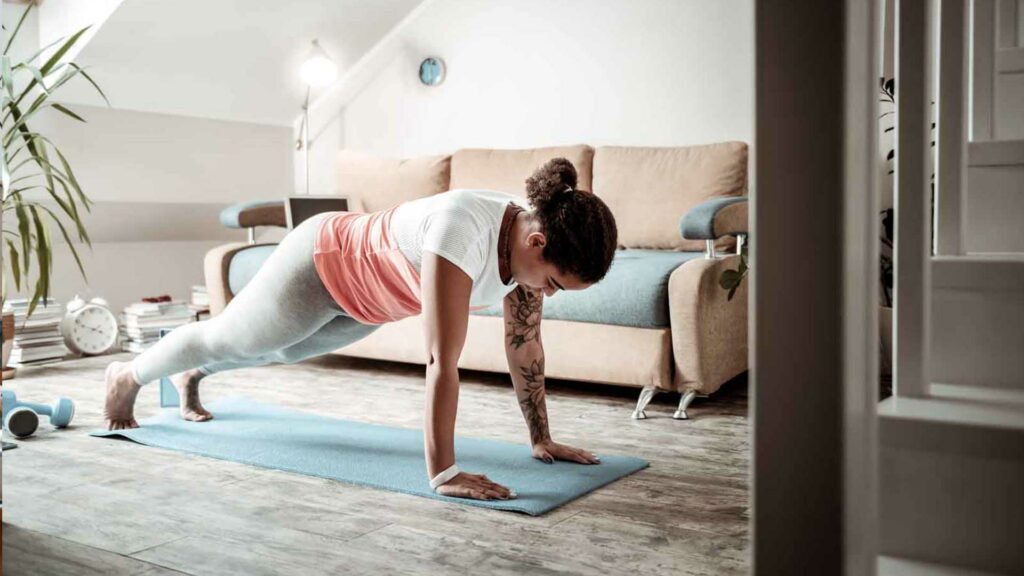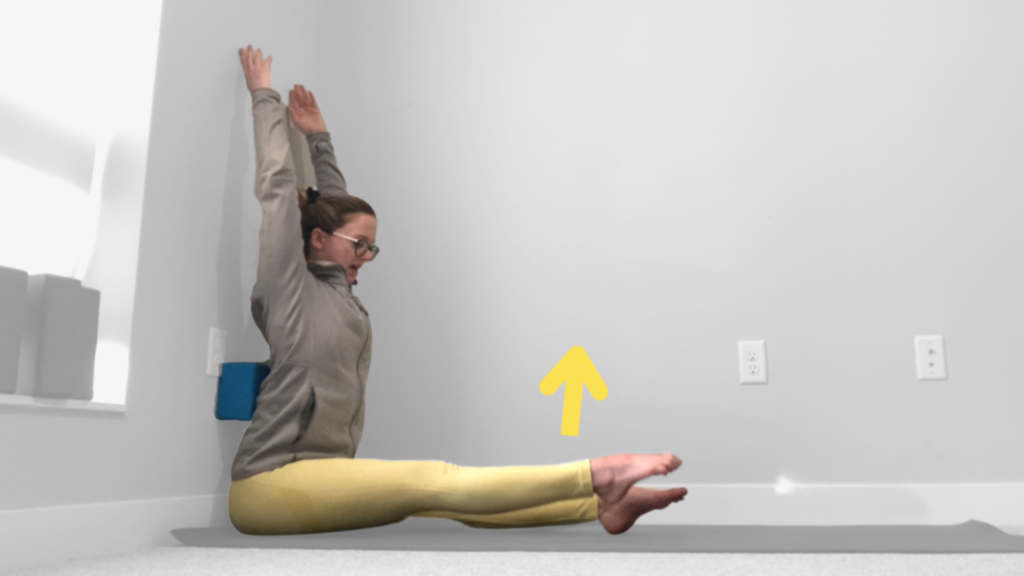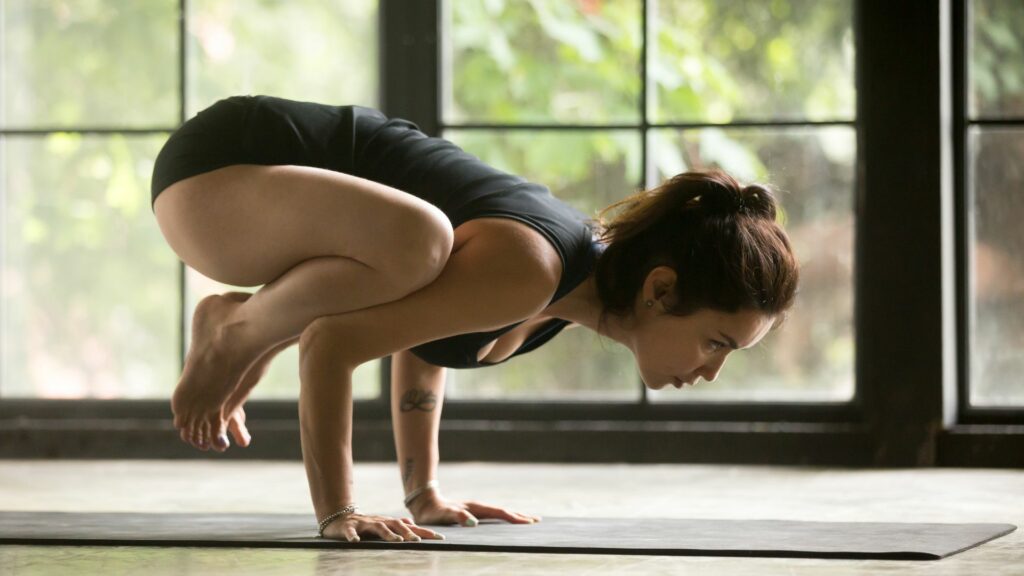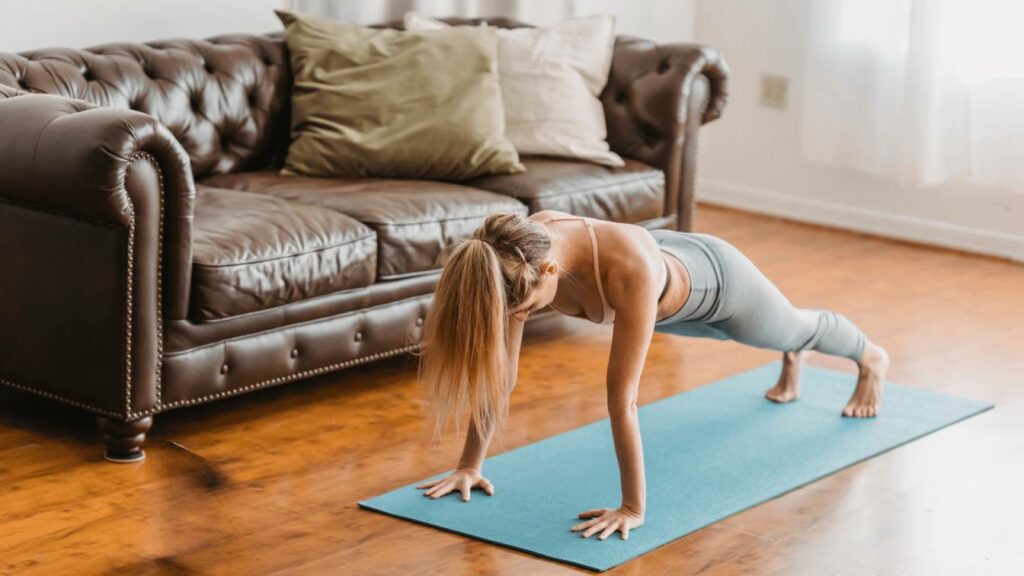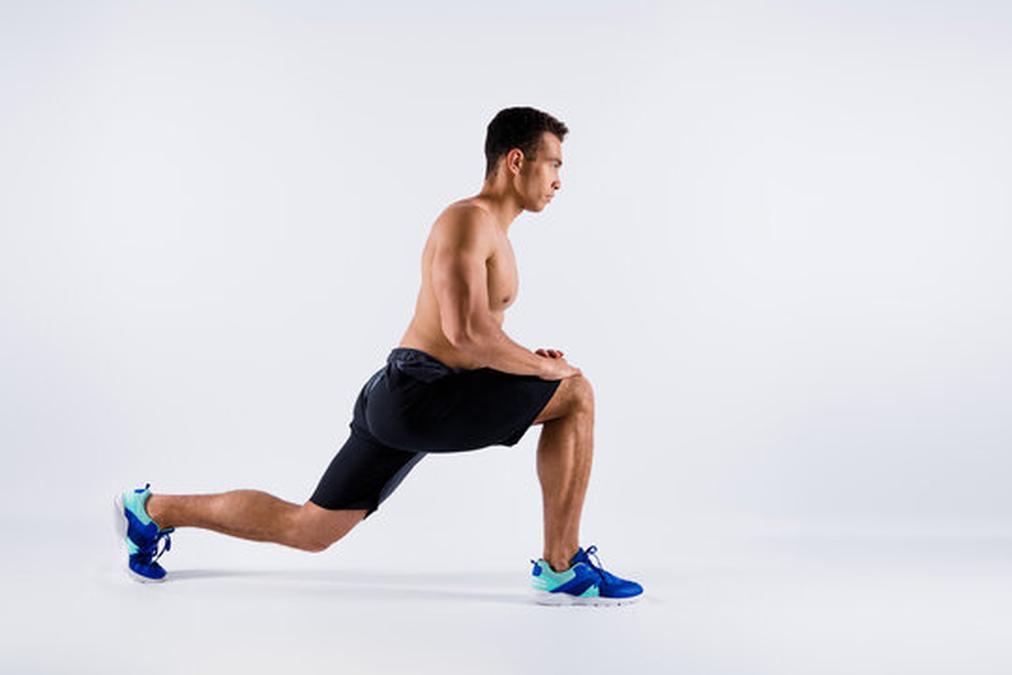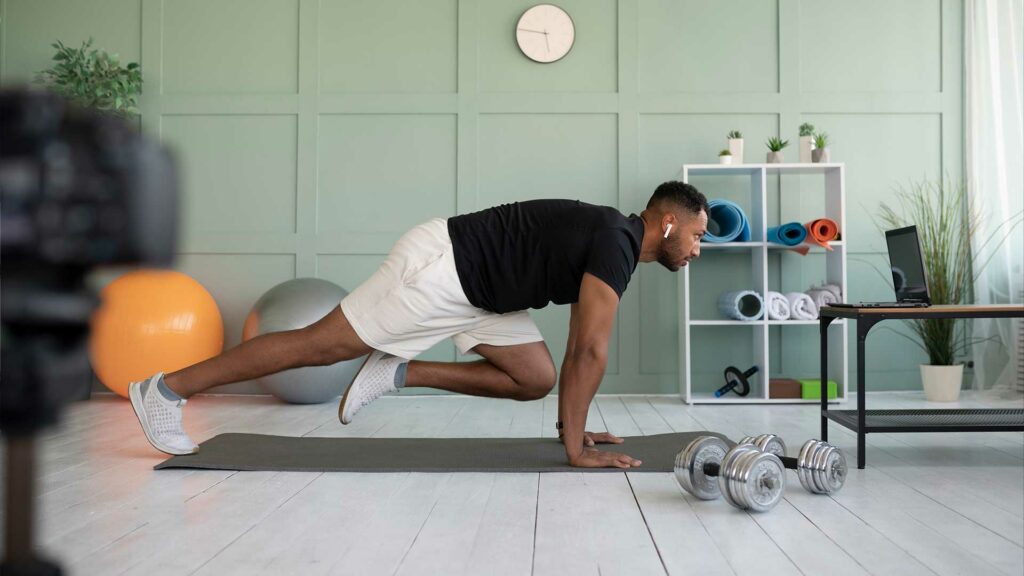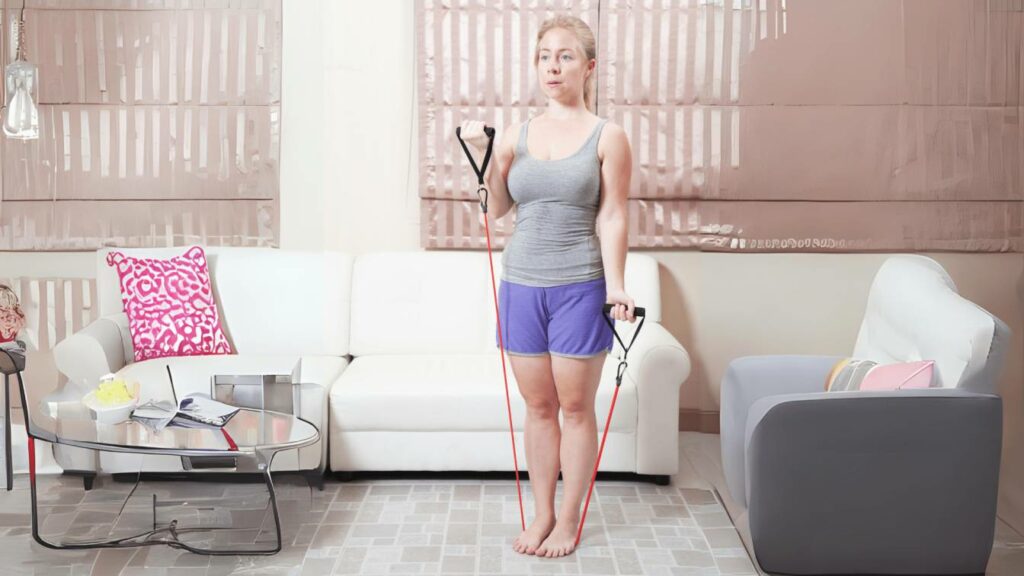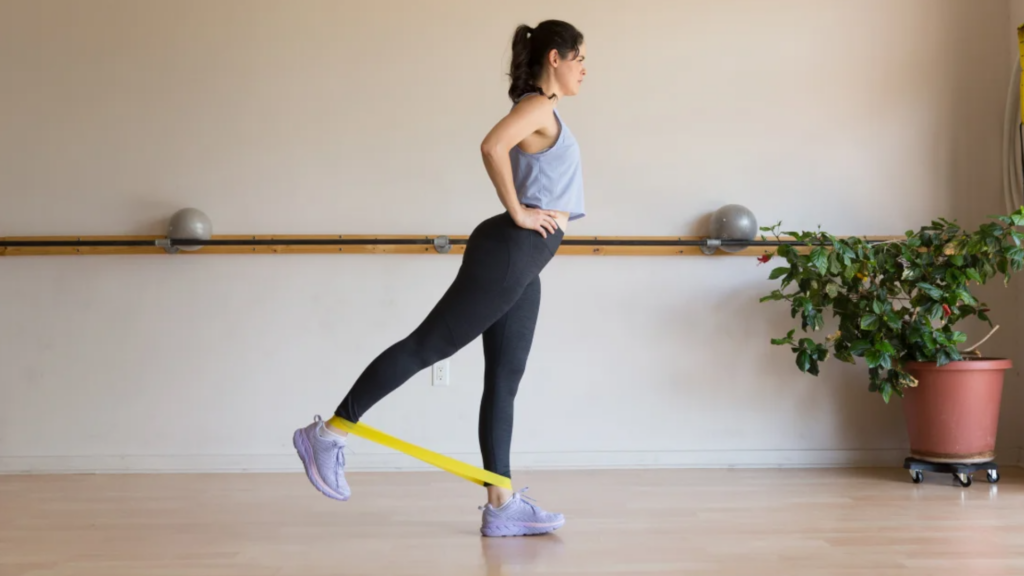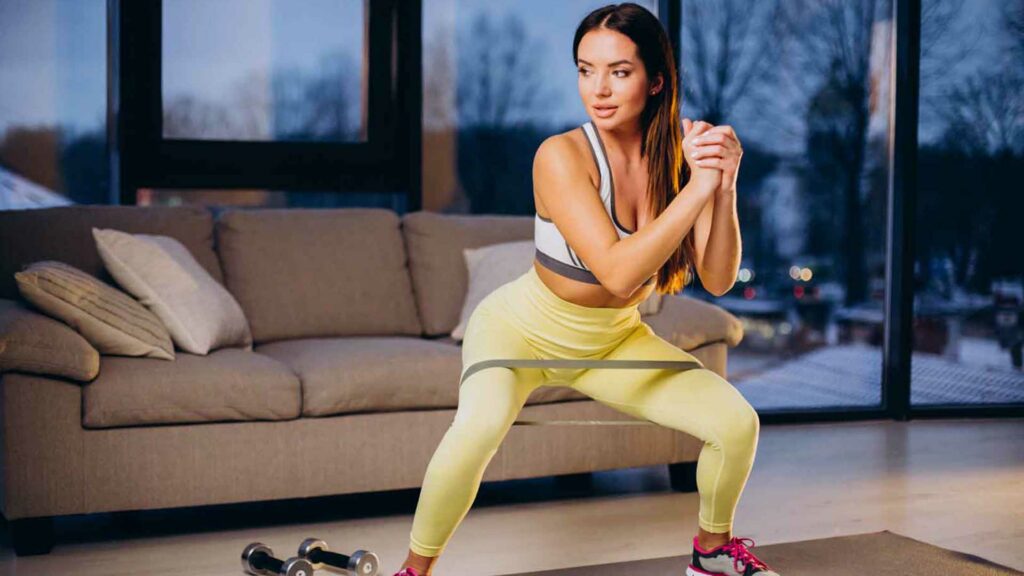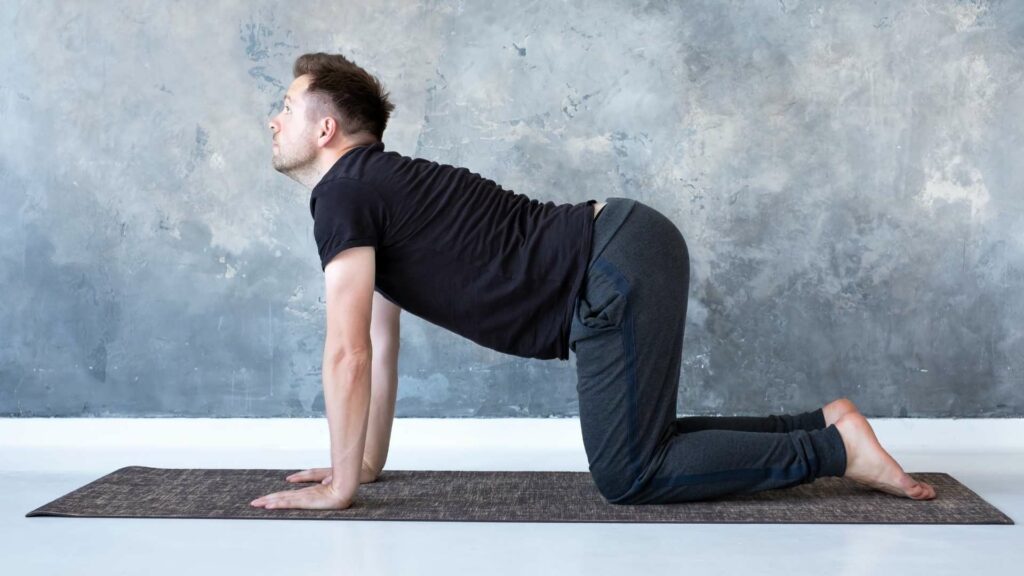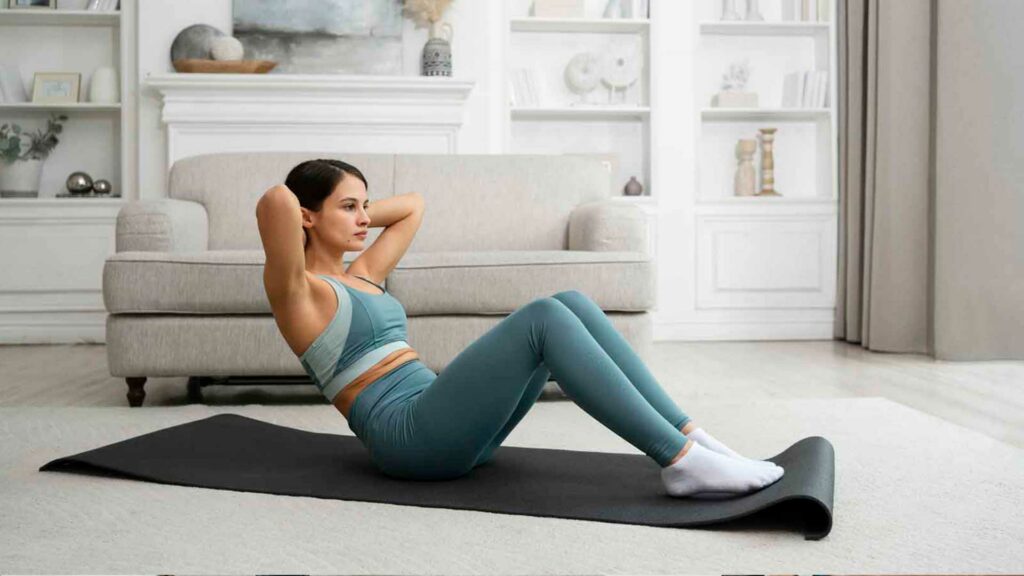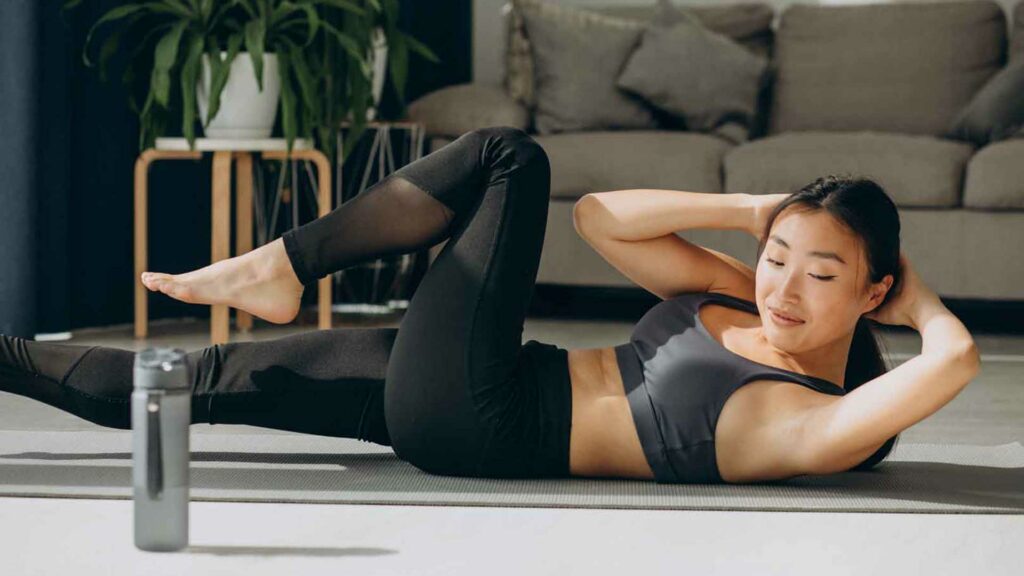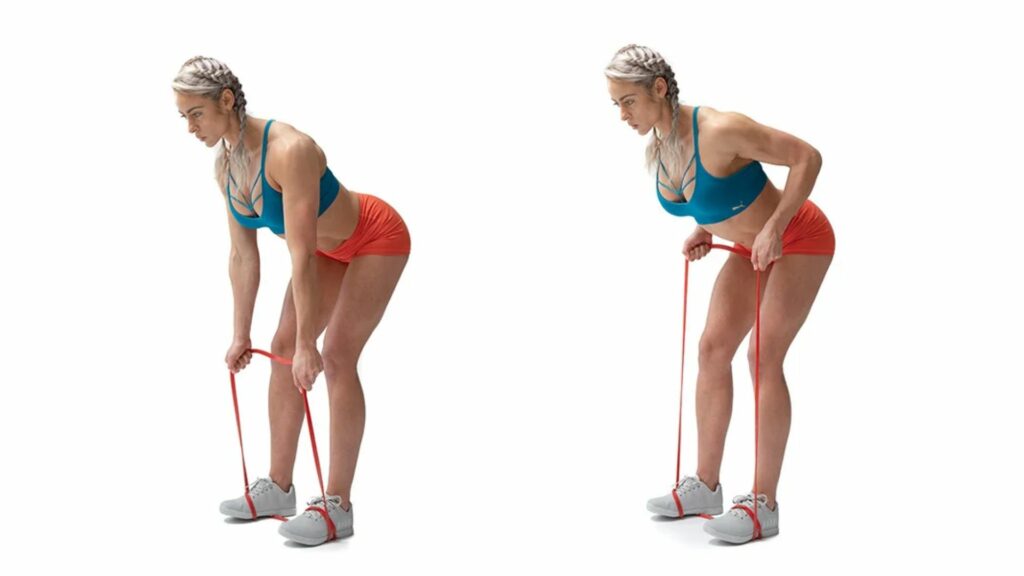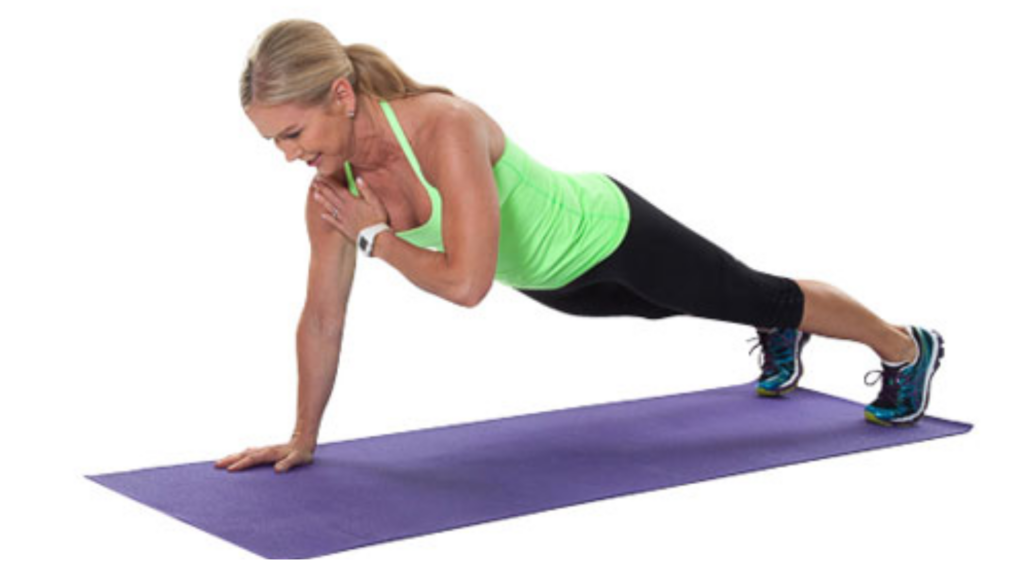Are you looking for a total body workout that can target multiple muscle groups at once? Look no further than the dumbbell squat press exercise, also known as the “Thruster.” In this guide, we’ll cover everything you need to know about the dumbbell squat press exercise, including its benefits, variations, sample workouts, modifications for people with injuries or disabilities, and proper nutrition to support muscle growth and recovery.
Benefits of the Dumbbell Squat Press Exercise
- Builds strength and endurance in multiple muscle groups.
- Improves posture, balance and cardiovascular health.
- Burns calories and aids in weight loss.
Merlin for Dumbbell Squat Press
The Merlin App is a valuable tool for optimizing your Dumbbell Squat Press exercise. Using AI real-time feedback, it actively assesses your form and technique as you perform the exercise, ensuring that you maintain proper posture and execute the movement correctly. This real-time guidance minimizes the risk of injury and helps you get the most out of your workout.
Additionally, the app’s customization features allow you to tailor your Dumbbell Squat Press routine to your fitness level and goals, whether you’re looking to build strength, enhance endurance, or target specific muscle groups. By tracking your progress and offering voice feedback, the Merlin App keeps you motivated and accountable during your workouts, ensuring that you continue to challenge yourself and make steady progress with your Dumbbell Squat Press and overall fitness regimen.
Benefits of the Dumbbell Squat Press Exercise
Incorporating the dumbbell squat press exercise into your fitness routine offers various benefits, including:
Building strength and endurance in multiple muscle groups
This exercise is an excellent way to build strength and endurance in your legs, shoulders, and core. Squatting down engages your leg muscles, including your quadriceps, hamstrings, and glutes. Pressing the dumbbells above your shoulders engages your shoulders, triceps, and upper back muscles.
Improving posture and balance
To maintain the proper form of the exercise, you’ll engage your core muscles, which helps improve your overall posture and balance.
Burning calories and aiding in weight loss
The dumbbell squat press exercise targets multiple muscle groups simultaneously, making it a highly efficient exercise that can help you burn calories and lose weight quickly.
Boosting cardiovascular health
This high-intensity exercise can help improve your cardiovascular health by elevating your heart rate and breathing rate.
Equipment Needed for the Dumbbell Squat Press Exercise
To perform the dumbbell squat press exercise, you’ll need a set of dumbbells. Here are some tips for selecting the right equipment:
Types of dumbbells recommended
There are several types of dumbbells you can use for the dumbbell squat press exercise, including adjustable dumbbells, rubber hex dumbbells, and neoprene dumbbells. Adjustable dumbbells allow you to change the weight quickly and easily. Rubber hex dumbbells are durable and won’t roll away. Neoprene dumbbells provide a softer grip.
Choosing the right weight for your fitness level
Select a weight that challenges you without causing you to sacrifice form. If you’re a beginner, start with a lower weight and work your way up as you gain strength and confidence.
Other equipment required
In addition to dumbbells, you may also need a workout bench or stability ball to perform the dumbbell squat press exercise. These can help you maintain proper form and balance during the exercise.
VIDEO
How to Perform the Dumbbell Squat Press Exercise with Proper Form
Proper form is essential when performing the dumbbell squat press exercise. Follow these step-by-step instructions:
- Stand with your feet shoulder-width apart, holding a dumbbell in each hand at shoulder level, with your palms facing each other.
- Lower your body into a squat position, keeping your back straight and your knees behind your toes.
- As you stand back up, press the dumbbells above your head, fully extending your arms.
- Lower the dumbbells back down to shoulder level and repeat for the desired number of repetitions.
Common mistakes to avoid
Some common mistakes to avoid when performing the dumbbell squat press exercise include allowing your knees to collapse inward, arching your back, not fully extending your arms when pressing the dumbbells overhead, and using too heavy of a weight, which can compromise your form.
Tips for beginners
If you’re new to the dumbbell squat press exercise, practice your squat form without weights before adding dumbbells. Start with a light weight and gradually increase as you gain strength. Focus on maintaining proper form throughout the exercise, and pay attention to your breathing, exhaling as you press the dumbbells overhead and inhaling as you lower them back down.
Variations of the Dumbbell Squat Press Exercise
Here are some variations of the dumbbell squat press exercise you can try to mix up your workout routine:
Single-arm dumbbell squat press
Perform the exercise with one arm at a time, alternating arms with each repetition.
Dumbbell squat jump press
Perform the exercise as usual but add a jump at the end of the movement.
Alternating dumbbell squat press
Perform the exercise as usual, but alternate arms with each repetition.
Other variations that target different muscles
You can perform the exercise with a narrow stance to target your inner thighs or add a bicep curl to target your arms. There are many other variations of the dumbbell squat press exercise you can try to target different muscle groups.
| Workout Plan | Sets | Repetitions | Rest Time | Frequency |
|---|---|---|---|---|
| Beginner | 3 | 8-10 | 60 sec | 2-3 times |
| Intermediate | 4 | 12-15 | 45 sec | 3-4 times |
| Advanced | 5 | 15-20 | 30 sec | 4-5 times |
Sample Workouts
Here are some sample workout plans to help you incorporate the dumbbell squat press exercise into your fitness routine:
Beginner workout plan
- 3 sets of 8-10 repetitions of dumbbell squat press exercise
- Rest for 60 seconds between sets
- Perform this workout 2-3 times per week
Intermediate workout plan
- 4 sets of 12-15 repetitions of dumbbell squat press exercise
- Rest for 45 seconds between sets
- Perform this workout 3-4 times per week
Advanced workout plan
- 5 sets of 15-20 repetitions of dumbbell squat press exercise
- Rest for 30 seconds between sets
- Perform this workout 4-5 times per week
Customizing your workout plan
Customize your workout plan by adjusting the number of sets and repetitions to suit your fitness level and goals. You can also add other exercises to your workout routine, such as jumping jacks, burpees, or plyometric exercises, to increase the intensity of your workout.
Modifications for People with Injuries or Disabilities
The dumbbell squat press exercise can be modified to accommodate various injuries or disabilities. Here are some modifications to consider:
Knee injuries
If you have knee injuries, you can reduce the range of motion of the squat or perform the exercise with a resistance band to reduce the impact on your knees.
Shoulder injuries
If you have shoulder injuries, you can perform the exercise with lighter weights or use resistance bands to reduce the strain on your shoulders.
Balance issues
If you have balance issues, you can perform the exercise while holding onto a stable object or perform the exercise seated on a stability ball.
Proper Nutrition for Muscle Growth and Recovery
To see the best results from the dumbbell squat press exercise, it’s essential to maintain a healthy and balanced diet that supports muscle growth and recovery. Here are some tips for proper nutrition:
Eat a diet rich in protein
Protein is essential for muscle growth and recovery. Make sure to include protein-rich foods in your diet, such as lean meats, fish, eggs, and legumes.
Stay hydrated
Drink plenty of water to stay hydrated and support muscle recovery.
Eat a balanced diet
In addition to protein, make sure to eat a balanced diet that includes fruits, vegetables, whole grains, and healthy fats.
Safety Considerations
While the dumbbell squat press exercise is highly effective, it’s essential to take precautions to avoid injury. Here are some safety considerations to keep in mind:
Precautions to take before performing the exercise
- Warm-up thoroughly before performing the exercise.
- Check with your doctor before beginning any new exercise routine, especially if you have any pre-existing medical conditions.
- Choose the right weight for your fitness level.
- Use proper form throughout the exercise.
Tips for avoiding injuries while performing the exercise
- Avoid using too heavy of a weight.
- Don’t allow your knees to collapse inward.
- Keep your back straight and your core engaged.
- Perform the exercise slowly and with control.
By following these safety considerations, you can avoid injury and enjoy all the benefits of the dumbbell squat press exercise.
Conclusion
The dumbbell squat press exercise is an effective and versatile exercise that can help you build strength, endurance, and improve your overall health. By following this comprehensive guide, you’ll be able to perform the exercise with proper form, try out different variations, customize your workout plan to suit your fitness level and goals, modify the exercise to accommodate injuries or disabilities, and maintain proper nutrition to support muscle growth and recovery. Remember to consult with your doctor before beginning any new exercise routine and prioritize safety and proper form. For more information on related exercises, check out our ultimate guide to squats, our guide to strength and conditioning calisthenics exercises, and our bodyweight exercises to unlock your potential.
Frequently Asked Questions
Q: Who can do dumbbell squat press exercise?
A: Anyone looking to build leg and shoulder muscles.
Q: What muscles does the dumbbell squat press exercise work?
A: It works your quads, glutes, shoulders, and triceps.
Q: How heavy should my dumbbells be for this exercise?
A: Start with light weights and gradually increase.
Q: What if I have knee problems?
A: Use caution and modify the exercise or avoid it.
Q: How many reps and sets should I do?
A: Aim for 3 sets of 10-12 reps with proper form.
Q: What are the benefits of this exercise?
A: It improves strength, balance, and boosts metabolism.

